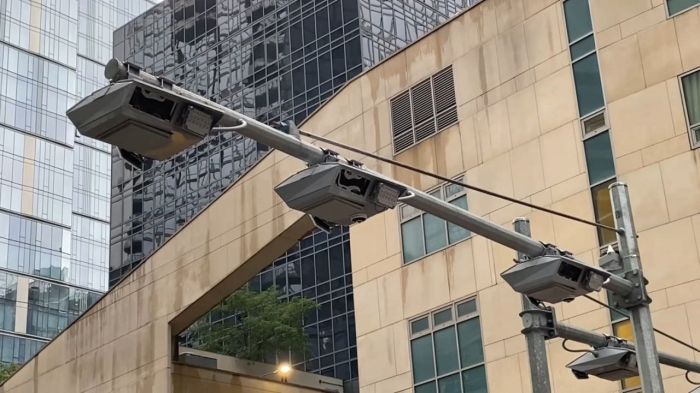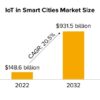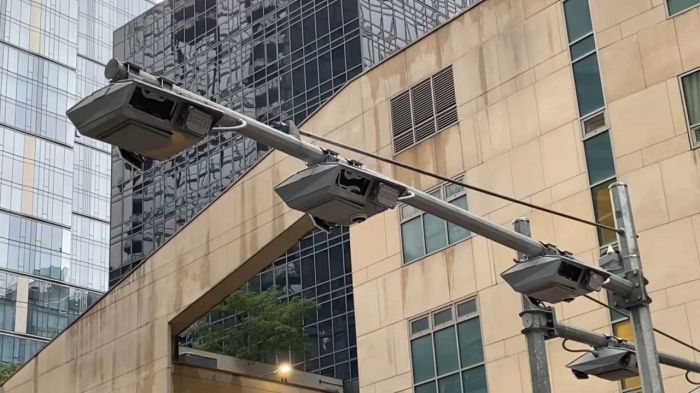Congestion pricing toll what is it and will it come to your city – Congestion pricing toll: what is it and will it come to your city? This topic explores the concept of congestion pricing, a system that charges drivers for using roads during peak hours. It delves into the mechanics, potential benefits and drawbacks, and explores the possibility of its implementation in your city. We’ll examine current traffic conditions, potential impacts on businesses and residents, and consider alternative transportation solutions.
Different cities have experimented with congestion pricing, achieving varying levels of success. Understanding the successes and failures of past implementations is crucial in evaluating the potential for such a system in your city. This article will analyze the pros and cons of congestion pricing, taking into account financial implications, public perception, and potential alternative solutions.
Introduction to Congestion Pricing Tolls
Congestion pricing tolls are a method of managing traffic congestion in urban areas. They work by charging drivers a fee to enter or use certain roads or zones during peak hours, aiming to reduce traffic volume and improve overall transportation efficiency. This system, while often controversial, has been successfully implemented in various cities globally, demonstrating its potential to address complex urban mobility challenges.The fundamental principle behind congestion pricing is to create a direct link between traffic demand and the cost of using congested roadways.
By increasing the price of driving during peak times, it’s anticipated that some drivers will choose alternative modes of transportation, such as public transit, biking, or carpooling, or adjust their travel times to avoid the toll. The goal is to shift traffic away from the most congested areas and times, easing congestion and improving the overall transportation experience.
Congestion Pricing Models
Different congestion pricing models cater to specific urban needs and traffic patterns. Zone-based models charge drivers for entering specific geographic areas, while time-based models charge for using certain roadways or zones during peak hours. Hybrid models combine aspects of both zone-based and time-based approaches.
Examples of Cities Implementing Congestion Pricing
Numerous cities worldwide have adopted congestion pricing schemes. London, for instance, introduced a zone-based system in 2003, charging drivers for entering the central zone during peak hours. Singapore has a well-established system that encompasses time-based and location-based tolls. Stockholm and Oslo have also successfully implemented congestion pricing programs. These examples demonstrate the potential and feasibility of congestion pricing strategies in different urban contexts.
Comparison of Congestion Pricing Models
| Model Type | Description | Advantages | Disadvantages |
|---|---|---|---|
| Zone-based | Charges drivers for entering specific geographic zones, often during peak hours. | Relatively straightforward to implement and enforce; can target specific congested areas effectively. | May not address congestion on specific roads outside the zone; could disproportionately affect residents of the zone. |
| Time-based | Charges drivers for using certain roads or zones during specific times, typically peak hours. | Can target congestion at specific times and locations effectively; easier to monitor usage and enforce tolls. | May not be effective in reducing congestion in areas outside of peak hours; might not account for variations in congestion within a zone. |
| Hybrid | Combines elements of zone-based and time-based models. | Offers a more comprehensive approach to congestion management, addressing both location and time-based congestion issues. | Can be more complex to implement and manage, requiring more sophisticated infrastructure and enforcement mechanisms. |
Impacts of Congestion Pricing Tolls
Congestion pricing tolls, while intended to alleviate traffic congestion, can have a complex array of effects on various segments of society and the environment. Understanding these impacts is crucial for implementing effective and equitable policies. These tolls are designed to encourage alternative transportation options and reduce reliance on private vehicles during peak hours, aiming to improve traffic flow and air quality.The effectiveness of congestion pricing hinges on how it affects different groups.
Some will benefit from reduced commute times and improved air quality, while others may face increased financial burdens or have to adapt to changes in their daily routines. Understanding these potential impacts is vital to designing policies that maximize benefits and minimize negative consequences.
Potential Positive Effects on Traffic Flow
Congestion pricing can lead to a noticeable reduction in traffic congestion during peak hours. By increasing the cost of driving during these periods, drivers are incentivized to shift their travel times or consider alternative modes of transportation. This can significantly improve traffic flow, reduce delays, and improve the overall efficiency of the transportation system. For example, London’s congestion charge has shown a demonstrable decrease in traffic volume and increased journey speeds during peak hours.
Potential Negative Effects on Certain Demographics
Congestion pricing can disproportionately affect low-income individuals and families. Higher tolls can represent a significant financial burden for those with limited budgets. Reduced mobility due to increased costs can limit access to employment, education, and essential services. The impact on vulnerable populations needs careful consideration during the implementation of such policies. For example, in cities where public transportation is less accessible or reliable, congestion pricing might disproportionately impact lower-income households.
Impact on Parking and Public Transportation
Congestion pricing can influence parking behaviors and the use of public transportation. Higher costs associated with driving might motivate individuals to consider alternative parking options, such as park-and-ride facilities, or use public transportation more frequently. The availability and efficiency of public transport systems become crucial for congestion pricing schemes to succeed. In some instances, increased ridership on public transportation has been observed following the implementation of congestion pricing.
Congestion pricing tolls—what are they and will they hit my city? It’s a hot topic right now, and honestly, I’m a bit curious. Meanwhile, space exploration continues to amaze, as evidenced by the recent success of the Blue Origin New Shepard NS-24 launch here. So, back to the tolls: I’m still wondering if these are on the horizon for my city.
Environmental Benefits of Congestion Pricing
Reduced traffic congestion leads to a decrease in vehicle emissions, contributing to a healthier environment. Fewer vehicles on the road translate to lower levels of air pollutants, improving air quality and public health. This is a key environmental benefit, especially in urban areas with high traffic volumes. Cities with congestion pricing schemes often see a decrease in greenhouse gas emissions as a result of reduced vehicle use.
Pros and Cons of Congestion Pricing
| Pros | Cons |
|---|---|
| Reduced traffic congestion | Increased financial burden for some |
| Improved air quality | Potential for reduced accessibility to employment and services |
| Increased public transport use | Potential for adverse impact on low-income communities |
| Potential for revenue generation | Potential for displacement of residents or businesses |
| Increased efficiency of transportation systems | Need for well-designed public transport infrastructure |
Potential Implementation in San Francisco
San Francisco, a vibrant city known for its iconic landmarks and bustling atmosphere, also faces significant traffic congestion challenges. Understanding the potential impacts of congestion pricing, including the need for alternative transportation solutions and the potential effect on local businesses, is crucial for a thoughtful discussion. Implementing such a system requires careful consideration of the city’s unique characteristics and potential consequences.
Current Traffic Conditions in San Francisco
San Francisco’s traffic conditions are notoriously challenging, especially during peak hours. Congestion is prevalent in key areas like the Financial District, the Embarcadero, and along major thoroughfares. Delays and gridlock are common, affecting commuters, businesses, and the overall quality of life. This persistent congestion has a measurable impact on travel time, fuel consumption, and air quality.
Traffic Congestion Data in San Francisco
Data from the San Francisco Municipal Transportation Agency (SFMTA) and other sources consistently show high levels of traffic congestion, particularly during the morning and evening commutes. Analysis of historical traffic data reveals a trend of increasing congestion over the past decade. Specific metrics, such as average delay times and vehicle miles traveled, are crucial for evaluating the severity of the problem.
These figures can help assess the potential effectiveness of congestion pricing.
Potential Locations for Congestion Pricing Zones
Potential congestion pricing zones in San Francisco could be implemented in high-traffic areas, such as the central business district (CBD) and key bridges. These zones would need to be strategically chosen to maximize their effectiveness in reducing congestion while minimizing the impact on residents and businesses. Implementing zones around major transit hubs could incentivize the use of public transportation.
Possible Impact on Local Businesses in San Francisco
Congestion pricing could affect businesses in several ways. Reduced traffic flow might impact deliveries, impacting businesses reliant on timely shipments. Increased parking costs, particularly if congestion pricing is linked to parking, could impact businesses relying on parking availability. However, potential benefits could include a decrease in noise pollution and air quality issues. Careful analysis of business types, their reliance on vehicular access, and the potential for alternative routes is essential.
Potential Need for Alternative Transportation Solutions in San Francisco
To mitigate the impact of congestion pricing, an enhanced public transportation network would be necessary. This includes improvements to existing transit systems, such as BART and Muni, as well as expanded bus routes. Increased bike lanes and pedestrian infrastructure could also ease congestion and encourage alternative modes of transport. A comprehensive analysis of alternative transportation options is critical to ensure equitable access and reduced reliance on private vehicles.
Comparison of San Francisco Traffic Conditions to Other Cities with Congestion Pricing
Comparing San Francisco’s traffic conditions to cities like London, Singapore, and Stockholm, which have implemented congestion pricing, can provide valuable insights. London’s experience with congestion pricing suggests a potential decrease in traffic volumes, but also the need for effective public transportation alternatives. Understanding the specific challenges and successes of other cities is essential in formulating a tailored approach for San Francisco.
Potential Public Consultation Strategies in San Francisco, Congestion pricing toll what is it and will it come to your city
Public consultation is critical for any congestion pricing initiative. A transparent and inclusive process is needed to ensure that residents, businesses, and stakeholders have a voice in the decision-making process. This includes holding public forums, surveys, and online discussions to gather input and address concerns. Utilizing various communication channels to reach diverse communities is essential for an effective consultation process.
So, congestion pricing tolls – what are they exactly, and will they grace our city streets any time soon? It’s a fascinating question, and honestly, thinking about the futuristic design elements in shows like “Hello Tomorrow” on Apple TV Plus, hello tomorrow apple tv plus retrofuturistic production design , makes me wonder if such innovative solutions might be the key to solving our traffic woes.
Ultimately, though, the question remains: will congestion pricing become a reality in our city?
Financial Implications and Feasibility
Congestion pricing, while promising for urban areas, requires a careful assessment of its financial viability. This involves projecting revenue, considering potential uses for collected funds, and analyzing the costs associated with implementation. A thorough understanding of the financial model is crucial for determining if such a system is feasible for a specific city.The projected revenue generation, coupled with responsible allocation of funds, is vital to the long-term success of congestion pricing.
This assessment considers not only immediate gains but also the potential for future growth and the impact on various stakeholders. Furthermore, understanding the potential costs involved is critical for ensuring the system remains affordable and sustainable. Different congestion pricing schemes have different financial models, which influence their overall feasibility. Ultimately, the financial model needs to be robust enough to justify the implementation costs and provide a pathway to positive outcomes for the city.
Projected Revenue Generation in San Francisco
San Francisco, with its high concentration of commuters and tourists, has the potential to generate significant revenue through congestion pricing. Projected revenue depends heavily on factors such as the chosen pricing structure, toll rates, and the time of day. For example, a dynamic pricing system, adjusting rates based on traffic volume and time of day, might yield higher overall revenue than a flat rate.
Historical data on traffic patterns and vehicle counts in San Francisco can be used to model potential revenue streams. A comprehensive study needs to account for factors such as the expected number of vehicles entering the zone, average trip lengths, and the potential impact of alternative transportation options.
Potential Use of Collected Revenue for Improving Public Transportation
The collected revenue can be a crucial funding source for enhancing San Francisco’s public transportation system. This includes investments in expanding the existing network, improving service frequency and reliability, and procuring new, efficient vehicles. Specific projects could include upgrading existing bus lines, extending subway lines to under-served areas, or implementing a robust electric bus fleet. Such investments would not only alleviate traffic congestion but also create a more sustainable and equitable transportation system.
Congestion pricing tolls—basically, charging drivers to use roads during peak hours—are becoming more common. Will my city adopt this? It’s a complex question, but also, a fascinating parallel to other, more ambitious solutions, like the concepts explored in ice balloon geoengineering climate change world view david keith. Ultimately, the decision hinges on a city’s specific needs and priorities, and the potential impact on traffic flow and the local economy.
Will it help ease congestion? Only time will tell.
Allocating funds for these projects can significantly improve the overall quality of life for San Francisco residents.
Potential Cost of Implementing Congestion Pricing in San Francisco
Implementing congestion pricing in San Francisco will involve various costs, including the development of a sophisticated payment system, the construction of necessary infrastructure, and the hiring of staff for management and maintenance. These costs must be meticulously analyzed to ensure they do not outweigh the potential revenue generation. The development of a user-friendly and reliable payment system is essential for the success of the program.
Public awareness campaigns and outreach programs will also be required to educate residents and businesses about the system and address concerns. These expenses need to be weighed against the expected long-term benefits.
Comparison of Financial Models of Different Congestion Pricing Schemes
Different cities utilize various congestion pricing models. Some schemes employ dynamic pricing, adjusting toll rates based on real-time traffic conditions. Others use a flat rate, which might be simpler to administer but potentially less effective in managing congestion. A study comparing these models, along with others such as tiered pricing systems, would be valuable in determining the most effective and financially sustainable approach for San Francisco.
Examining successful implementations in other cities, such as London or Singapore, can offer valuable insights.
Financial Model for Congestion Pricing in San Francisco
A financial model for congestion pricing in San Francisco would need to incorporate various variables, such as the projected traffic volume, toll rates, and the cost of implementation. For instance, a model could project the revenue generated at different toll rates, and then compare those projected revenue numbers to the expected costs of implementation. This model would also need to consider potential reductions in traffic volume, and the subsequent impact on revenue.
The model should be continuously monitored and adjusted as needed, incorporating real-time data and feedback from stakeholders. A comprehensive financial model is essential to ensure that the congestion pricing system is financially sustainable and provides value to the city.
Financial Factors Affecting the Feasibility of Congestion Pricing
- Economic conditions: Economic downturns can impact vehicle usage and thus affect the revenue potential of congestion pricing. Consideration must be given to how a fluctuating economy will influence vehicle traffic and the corresponding revenue collected. For example, during recessions, fewer people might commute, resulting in lower toll revenue.
- Alternative transportation options: The availability and efficiency of alternative transportation options, such as public transit, biking infrastructure, and ride-sharing services, play a significant role in the success of congestion pricing. These options can impact the overall traffic volume and the revenue potential.
- Public perception and acceptance: Public support for congestion pricing is crucial for its long-term success. A well-executed public awareness campaign and community engagement strategy are essential to address concerns and foster understanding.
- Administrative costs: The costs associated with managing the system, including enforcement, customer service, and maintenance, must be carefully assessed and accounted for in the financial model.
Case Studies and Best Practices
Congestion pricing, while a relatively new concept in many cities, has a rich history of successful implementation elsewhere. Examining successful programs, challenges faced, and the effectiveness of these programs provides valuable insight into the potential for similar initiatives in cities like San Francisco. Learning from past experiences can help us anticipate and address potential hurdles and optimize the design of a congestion pricing program tailored to our unique context.Understanding how different cities have implemented and adapted congestion pricing strategies offers valuable lessons for future planning.
By examining their successes and failures, we can identify best practices, pinpoint common challenges, and ultimately craft a more robust and effective strategy for San Francisco.
Successful Congestion Pricing Programs
Several cities have successfully implemented congestion pricing programs, demonstrating its potential for reducing traffic congestion and improving urban environments. These programs often involve charging drivers for entering congested areas during peak hours. The key to success often lies in carefully calibrated pricing structures, transparent communication, and community engagement. For example, London’s congestion charge, introduced in 2003, saw significant reductions in traffic volume and air pollution within the zone.
Other notable programs include those in Singapore, and Stockholm.
Common Challenges and Solutions
Implementing congestion pricing programs often encounters challenges related to public perception, economic impacts, and operational complexities. Resistance to paying tolls, concerns about accessibility for low-income drivers, and ensuring equitable distribution of revenue are common concerns. Addressing these concerns often involves transparent communication strategies, offering exemptions for certain groups, and investing in alternative transportation options. For instance, the implementation of a dedicated bus lane or expanded public transit networks can help alleviate concerns about accessibility for low-income drivers.
Effectiveness in Reducing Traffic Congestion
Studies on congestion pricing programs show a demonstrable correlation between the implementation of these programs and a reduction in traffic congestion. This reduction is often measured by decreased traffic volume, reduced travel times, and improved air quality. In many instances, congestion pricing has led to a measurable decrease in emissions, thus improving the quality of the air.
Comparison of Experiences Across Cities
Different cities have approached congestion pricing in diverse ways, leading to variations in outcomes and experiences. Factors like population density, existing transportation infrastructure, and political climate all play a role in the success or challenges faced in implementing the programs. For example, London’s congestion charge, implemented in a densely populated city with extensive public transit, might face different challenges compared to a smaller city with less robust public transport.
Impact on Traffic Patterns
Congestion pricing often leads to shifts in traffic patterns, influencing both the timing and routes of drivers. The pricing structure plays a crucial role in how these shifts occur. By increasing the cost of entering congested areas during peak hours, drivers are incentivized to adjust their travel times, reducing congestion and improving overall traffic flow.
Implementation Strategies of Various Cities
| City | Key Strategies | Results |
|---|---|---|
| London | Graduated pricing structure, exemptions for residents, investments in public transit. | Significant reduction in traffic congestion, improved air quality, and increased revenue for transport improvements. |
| Singapore | Comprehensive approach incorporating electronic payment systems, strong enforcement, and public awareness campaigns. | Effective reduction in congestion and improved traffic flow, demonstrating the effectiveness of a technologically advanced approach. |
| Stockholm | Flexible pricing structure, considering time-of-day and day-of-week variations. | Measurable reduction in congestion, indicating the benefit of a dynamically adjusted pricing structure. |
Alternative Solutions and Strategies

Tackling traffic congestion isn’t just about slapping a toll on drivers. A holistic approach, encompassing various strategies, is crucial for sustainable and effective solutions. This section explores alternative methods, focusing on the power of public transit, cycling, walking, and technology in managing traffic flow more efficiently.
Improved Public Transportation
Investing in robust and accessible public transportation is fundamental to reducing reliance on private vehicles. Well-designed bus routes, efficient subway systems, and reliable light rail networks can significantly decrease the number of cars on the road during peak hours. This leads to reduced congestion, improved air quality, and a more sustainable urban environment. Consider cities like Copenhagen, where extensive and affordable public transport has made a substantial impact on traffic flow.
Promoting Cycling and Walking
Creating a city-wide network of bike lanes and pedestrian-friendly walkways encourages alternative modes of transportation. This not only reduces traffic but also promotes healthier lifestyles and enhances the urban experience. Cities like Amsterdam and Portland, renowned for their cyclist-friendly infrastructure, have demonstrated the success of dedicated bike lanes and pedestrian zones in reducing traffic and improving the quality of life.
Dedicated bike lanes, pedestrian-friendly crossings, and attractive urban spaces all play a role.
Utilizing Technology for Traffic Management
Modern technology offers innovative solutions to manage traffic flow in real-time. Intelligent transportation systems (ITS) use sensors, cameras, and data analysis to monitor traffic patterns and adjust traffic signals dynamically. These systems can optimize traffic flow, reduce delays, and improve overall efficiency. Furthermore, mobile applications and navigation tools can provide real-time traffic information, guiding drivers to alternative routes and reducing congestion.
Consider how apps like Waze use user-reported traffic data to help optimize routes in real-time.
Comparison of Traffic Management Strategies
| Strategy | Effectiveness | Cost | Environmental Impact | Social Impact |
|---|---|---|---|---|
| Congestion Pricing | High (short-term), but long-term effectiveness depends on other factors | High | Moderate (reduces traffic but doesn’t address root causes) | High (affects those who rely on personal vehicles) |
| Improved Public Transportation | High (long-term), significant reductions | High (initial investment), medium (long-term) | High (reduces emissions) | High (accessible to a wider population) |
| Promoting Cycling and Walking | Medium (long-term), but significant reductions in certain areas | Medium | High (reduces emissions) | High (improves health and accessibility) |
| Technology-Based Traffic Management | High (can optimize in real-time) | Medium | High (reduces emissions and travel time) | High (provides information and guidance) |
“A multifaceted approach is often more effective than relying on a single strategy for managing traffic congestion.”
Concluding Remarks: Congestion Pricing Toll What Is It And Will It Come To Your City

In conclusion, congestion pricing presents a complex set of challenges and opportunities for cities looking to manage traffic congestion. The success of such a system hinges on careful planning, public engagement, and the development of robust alternative transportation strategies. Whether your city adopts congestion pricing will depend on a thorough evaluation of its specific circumstances, needs, and potential consequences.





